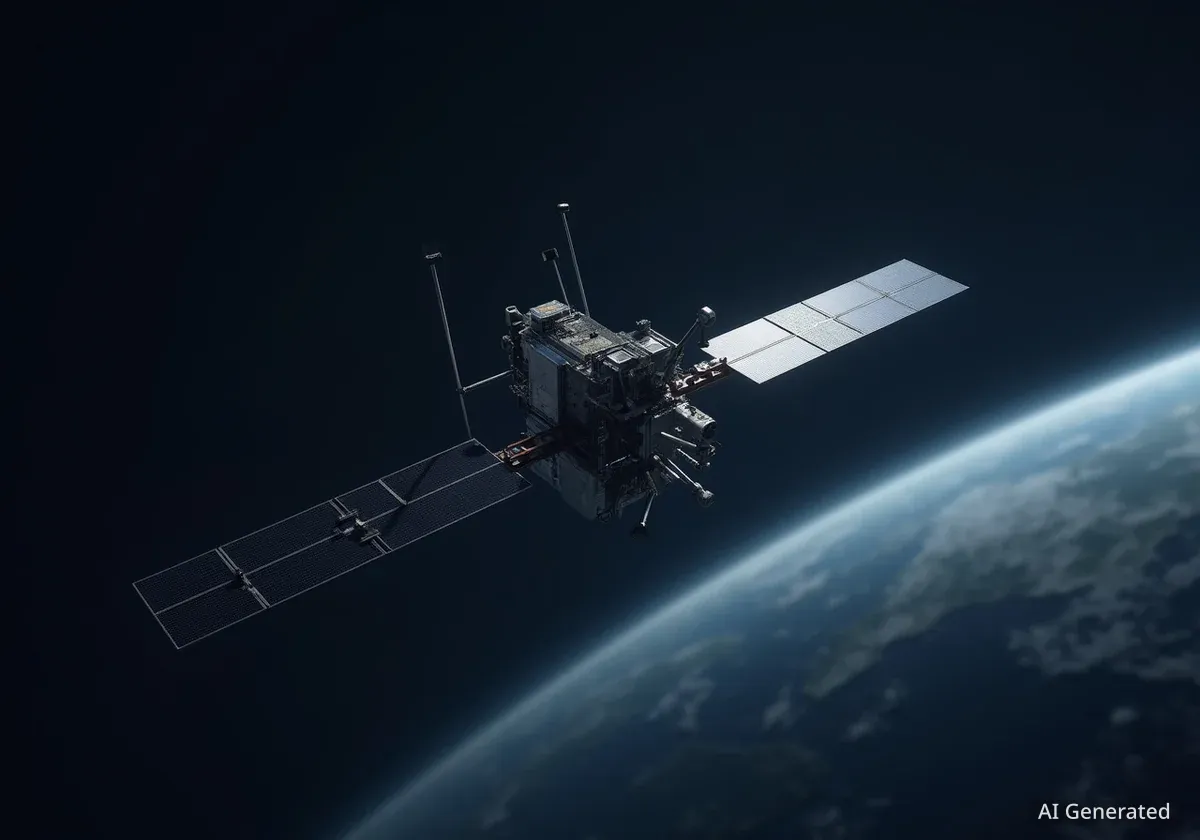The U.S. Space Force is set to invest nearly a billion dollars in a new generation of commercial communication satellites. The initiative, named Maneuverable GEO, aims to create a fleet of satellites in geosynchronous orbit that can change their position to support military operations and avoid threats.
This five-year, $905 million program represents the largest part of the Commercial Satellite Communications Office's (CSCO) latest forecast, signaling a significant shift in military space strategy toward more dynamic and resilient satellite capabilities.
Key Takeaways
- The U.S. Space Force plans to award $905 million in contracts for its Maneuverable GEO program over the next five years.
- The program will establish a commercial fleet of communication satellites that can move within geosynchronous orbit.
- This initiative is the largest single component of the CSCO's fiscal 2026 forecast, which outlines up to $1.1 billion in total contract opportunities.
- The goal is to enhance military communication agility, provide better regional coverage, and protect assets from space debris or potential threats.
A New Era of Orbital Agility
The U.S. military's reliance on space-based assets for communication, navigation, and surveillance is well-established. However, most of these assets, particularly those in geosynchronous orbit (GEO), have traditionally been static. They are placed in a specific orbital slot and remain there for their operational lifespan.
The Maneuverable GEO program seeks to change this paradigm. By creating a pool of commercial contractors with satellites capable of controlled movement, the Space Force can adapt its satellite coverage on demand. This ability to reposition assets is seen as a critical advantage for modern military operations.
Officials have emphasized the strategic importance of this shift. The ability to move a satellite means communication resources can be concentrated over a specific region during a crisis or conflict, providing enhanced support to troops on the ground.
What is Geosynchronous Orbit?
Geosynchronous orbit (GEO) is a high Earth orbit that allows satellites to match Earth's rotation. Located approximately 35,786 kilometers (22,236 miles) above the equator, a satellite in this orbit appears to remain in a fixed position in the sky from the perspective of a ground observer. This makes it ideal for communication and broadcasting satellites that need to continuously cover a specific geographic area.
The Strategic Importance of Maneuverability
The need for maneuverable satellites extends beyond tactical support. A key driver for the program is the increasing congestion and potential for threats in space. The ability to move a satellite allows it to dodge space debris, which can cause catastrophic damage upon impact.
Furthermore, this mobility offers a defensive advantage. If a satellite is targeted by an adversary, it could potentially maneuver away from the threat. This agility is a core component of building a more resilient and survivable space architecture for the Department of Defense.
"That’s going to be a game-changer for us in the military, where you’re not at a stagnant orbit, and you’re able to drift from point to point, especially supporting us in the event of a regional or national war so that we can maneuver more of our capabilities to be more agile to the warfighter."
The program also addresses the need to supplement the military's aging satellite constellations. By leveraging commercial innovation, the Space Force can deploy newer, more capable systems faster and potentially at a lower cost than developing proprietary military satellites. These new commercial satellites are expected to be smaller and built more quickly, providing access to essential military frequency bands where needed.
Contract Details and Program Timeline
The Space Force's procurement arm for commercial satellite communications, the CSCO, has laid out a clear path for the Maneuverable GEO program. According to its fiscal 2026 forecast to industry, the competition for the program is expected to open in early 2026.
The service anticipates awarding the first contracts by June 2026. The $905 million budget will be distributed over five years among a pool of selected contractors. This approach fosters competition and ensures a diverse supply of capabilities from the commercial sector.
This initiative was previously listed in the fiscal 2025 forecast but experienced a delay. Despite the schedule shift, the projected funding of $905 million has remained consistent, underscoring the program's high priority within the Space Force.
CSCO's 2026 Forecast at a Glance
The Maneuverable GEO program is the centerpiece of a larger set of planned contracts. The entire fiscal 2026 forecast includes seven programs with a total potential value of up to $1.1 billion, highlighting the military's growing reliance on commercial space services.
Broader Military and Government SATCOM Needs
While the Maneuverable GEO program is the largest planned expenditure, the CSCO forecast details several other critical contracts to support various government and military branches.
These additional requirements demonstrate the widespread need for robust satellite communications across the U.S. government. The planned contracts include:
- Counterdrug Surveillance: A four-year contract worth up to $10 million for Air Combat Command to monitor drug trafficking routes in the Americas and the Caribbean. An award is expected in January.
- Air Force Central Command Support: Two separate contracts, each valued between $35 million and $45 million, to provide SATCOM services for operations in the Middle East.
- Customs and Border Protection: A contract valued at $35 million to $45 million for commercial SATCOM support.
- Coast Guard Aviation: A $63 million contract to equip Coast Guard aircraft with satellite communication services.
- Unmanned Vehicle Control: A smaller award of $650,000 to support the Mobile Unmanned Vehicle Command and Control Center.
Together, these initiatives paint a picture of a military that is increasingly turning to the commercial space industry for flexible, cost-effective, and cutting-edge solutions. The Maneuverable GEO program, in particular, marks a pivotal step toward a more dynamic and resilient presence in space.





